Apple Music vs Spotify: which is better?
The two giants of music streaming each offer compelling experiences, but which service deserves your £10 a month?
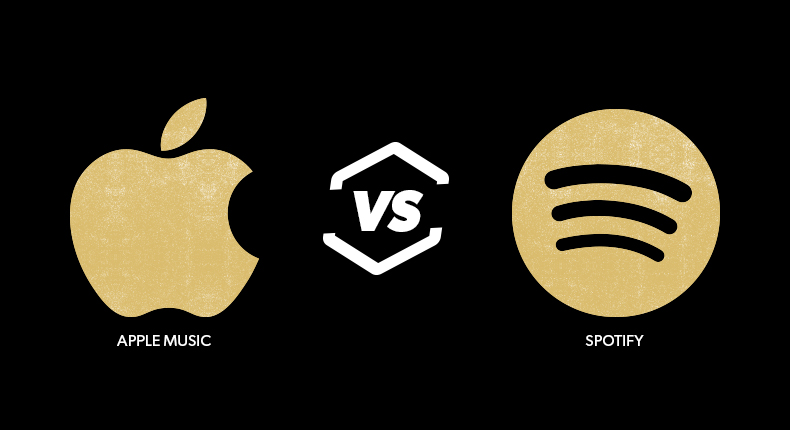
The way we consume music has evolved dramatically over the past 50 years.
One of the biggest changes is the shift from ownership of physical – and latterly digital – music (remember Steve Jobs pulling 1,000 songs out of his pocket in 2001?) to streaming; playing songs in real-time from a library in the ether.
Streaming has in some ways provided a huge boost to the music industry, offsetting the decline in sales of physical formats and reshaping the way music is packaged, distributed and consumed.
According to global music industry representative IFPI, by the end of 2019, streaming accounted for more than half (56.1 per cent) of global recorded music revenue for the first time.
It is the industry’s fastest-growing revenue source, with 89 per cent of music-lovers across the globe listening to music through on-demand streaming, and 54 per cent of 35 to 64-year-olds using a streaming service in the past month – up eight per cent on figures taken 12 months previously.
The state of play
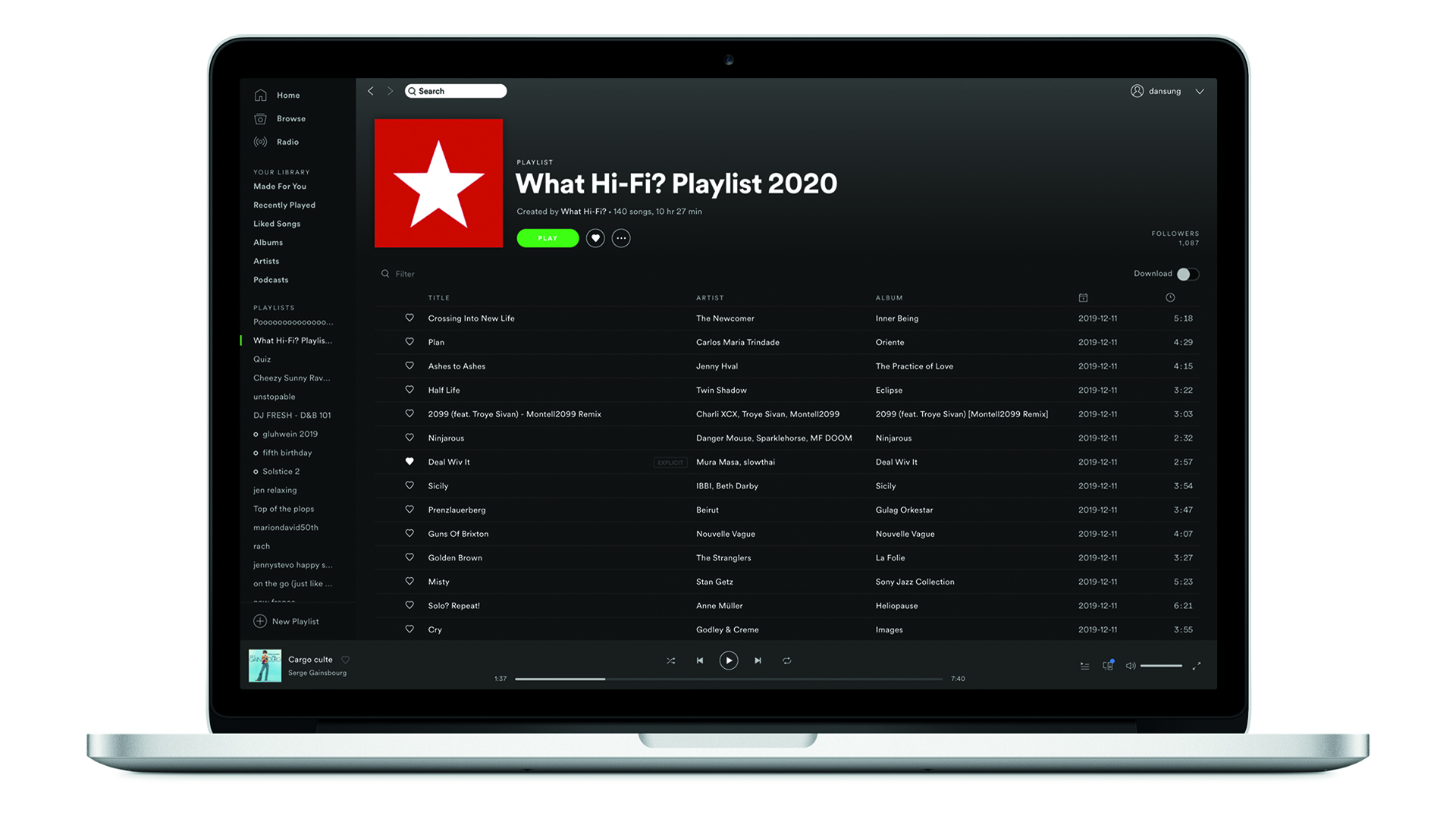
There are plenty of streaming services vying for your attention: Deezer, Google Play Music, Primephonic, Amazon Music Unlimited, and YouTube Music to name a few.
Tidal, with its CD-quality and hi-res audio streaming tiers, has made ripping CDs a thing of the past, while Qobuz’s Sublime+ subscription offers hi-res downloads too.
Get the What Hi-Fi? Newsletter
The latest hi-fi, home cinema and tech news, reviews, buying advice and deals, direct to your inbox.
But the biggest two by far are Spotify and Apple Music. Since 2008, Spotify has been at the forefront of streaming.
As one of the longest-running and most subscribed-to services, its dominance has seen many rivals fall by the wayside. But Spotify arguably faces its biggest threat yet from Apple Music (previously Beats Music until Apple acquired it in 2014).
Here, we compare the two giants to see which most deserves your money.
Subscription plans
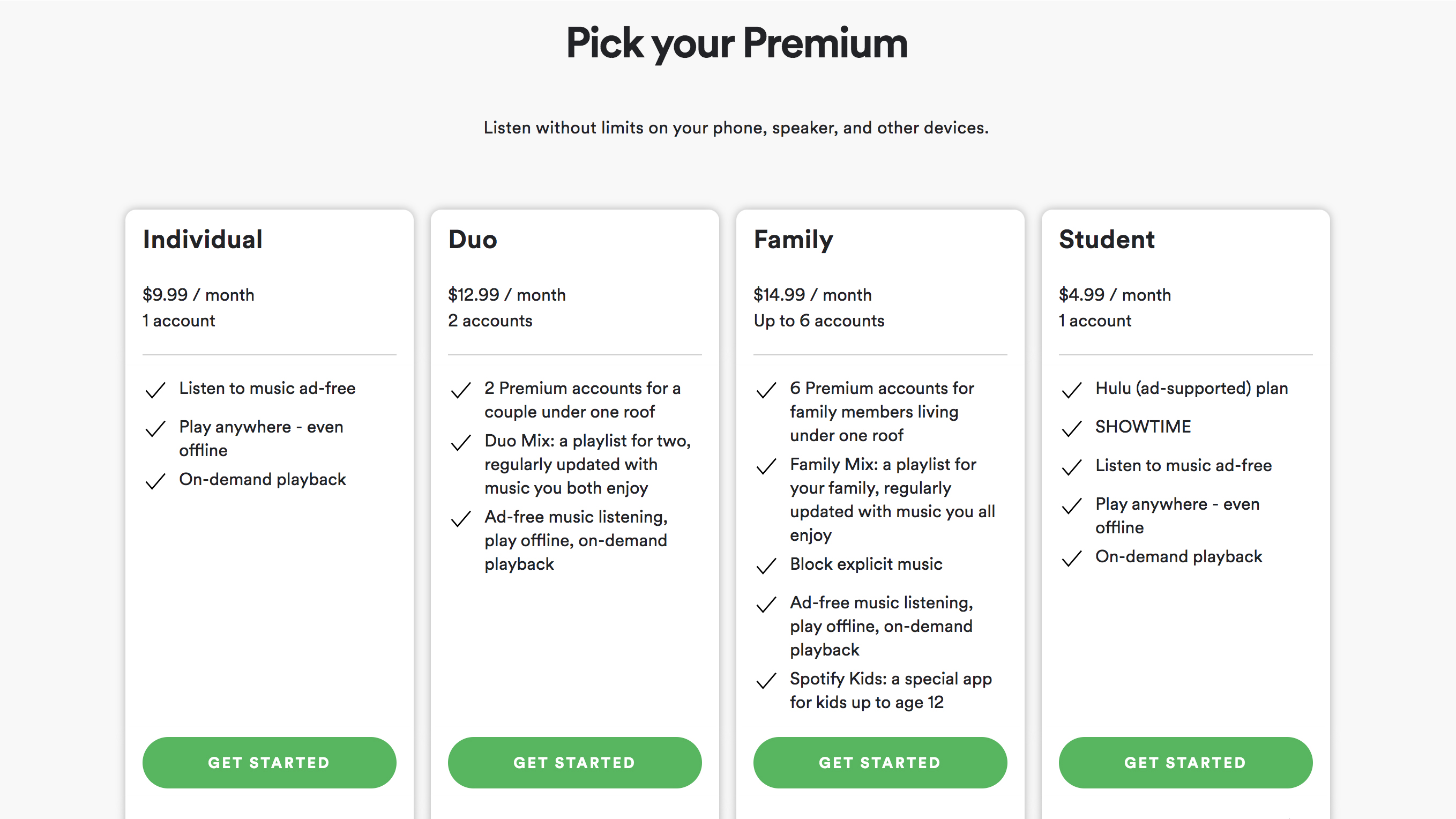
If you don’t have the extra cash to splash on streaming, then Spotify should probably be your go-to service.
Staying true to its “music for everyone” ethos, it is one of the few to offer a free (ad-supported) subscription tier alongside its Premium service.
The desktop version is pretty unrestricted in terms of search and stream options, and while free users on the mobile app could previously only listen to playlists in shuffle mode rather than specific tracks, Spotify updated the app in 2018 to allow free users unlimited listening to as many as 750 tracks across 15 top playlists every month (including Discover Weekly), equating to about 40 hours of music playback.
Of course, there are adverts, and the data rate is capped at 160kbps, but the service is free, so it'd be churlish to complain.
The majority of Spotify’s 100 million active users settle for the free tier but, as the 140 million who now subscribe to the paid-for Premium service can vouch for, there’s plenty of reason to shell out: 320kbps streams, offline listening, Spotify Connect support, search and skip tracks on mobile devices, and no adverts.
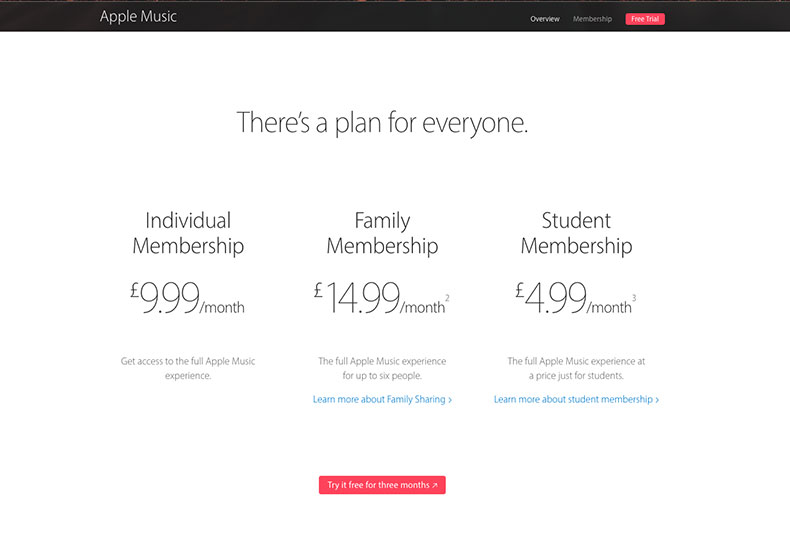
Apple Music doesn’t have a free tier, although there is a three-month free trial and you don’t need to be a member to listen to Apple Music 1 radio (formerly Beats 1) – one of the service’s most celebrated features.
For online and offline streaming and access to more radio stations, the monthly fee is also £10 ($10) (or £5 ($5) for the student membership).
Apple Music may have arrived late to the party, but it did so with a huge fanfare. While it may currently have around half the number of paying subscribers as Spotify (68m by the end of 2019, according to German statistics portal, Statista), the fact that it has reached that in just over five years is impressive.
Now that Spotify has revised the initial monthly £30 cost of its Family Plan, both services now offer £15 ($15) family membership covering up to six users. Recently, Spotify also launched a £12.99 ($12.99) Duo membership too, for couples.
**Winner** Spotify
Catalogue
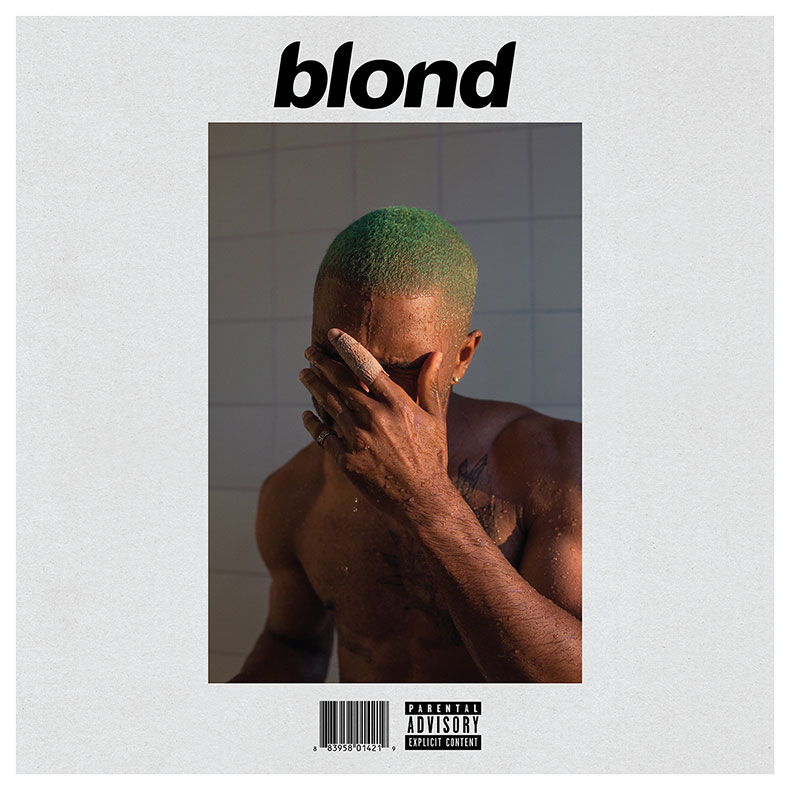
It’s a pretty even match when it comes to catalogue size and platform support.
Apple Music claims over 60m tracks in its back catalogue, while Spotify's figure is 50m songs. And that’s growing – in April 2019, Spotify founder Daniel Ek told investors that 40,000 songs were being added to Spotify's streaming platform every day. It's not just music though, the catalogue is growing in terms of types of content too.
Battling to be at the forefront of innovation, Spotify has focused on podcasts as well as music for its content growth. Since the acquisition of podcasting production specialist Gimlet Media in 2019, over 700,000 podcasts have been made available to stream and download on Spotify, including a raft of Spotify exclusives.
And if that sounds a bit much, there a set of human-curated podcast playlists to help you find your new favourite shows with names such as 'Best Podcasts of the Week', 'Brain Snacks' and 'Crime Scene' – all self-explanatory and well worth delving into.
Perhaps Apple's advantage over Spotify here is that while both services offer playlists that comprise songs based on your listening habits, Apple also has the Apple Music 1 radio station, which features human DJs at the decks.
But streaming services aren’t quite the global jukebox they could be.
Some anti-streaming artists, including Adele and, historically, Prince, have deliberately restricted their work. Spotify has come into conflict with artists over both the low royalties it pays acts and the very existence of its free tier.
In 2014, Taylor Swift publicly pulled all but one of her songs from Spotify. At the time, Spotify said that 16m of its users had played Swift's music in the 30 days leading up to the removal, adding that she appeared on 19m Spotify playlists.
Swift wrote in a Wall Street Journal op-ed, "It's my opinion that music should not be free" although she has now conceded this protest.
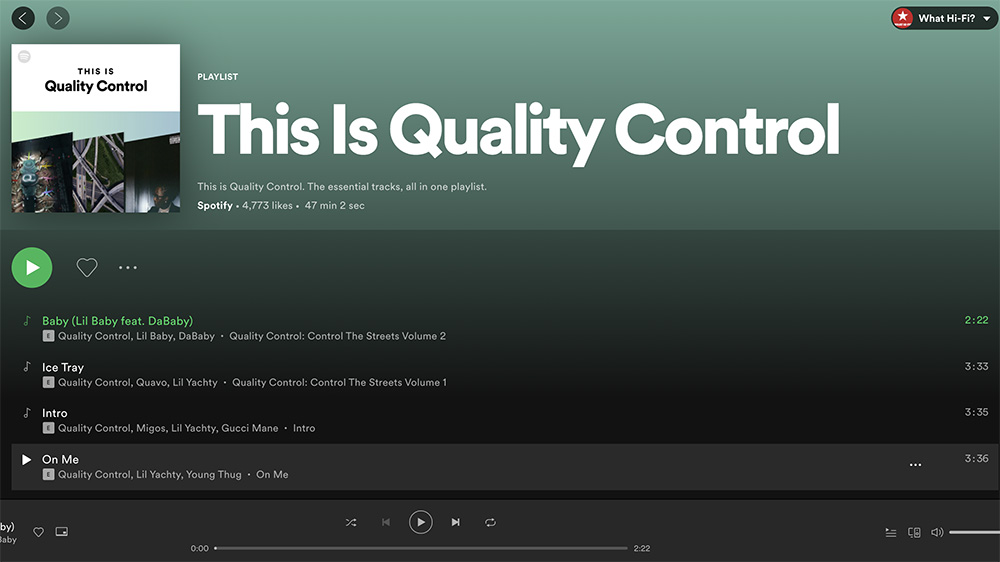
Jay-Z’s involvement in Tidal has seen some of his albums, including The Blueprint, appear exclusively there, although the artist eventually threw in the towel on that particular exclusivity war.
Apple has cut exclusive deals, including Dr Dre’s Compton album, Drake's Views From The 6 and Britney Spears' Glory, all of which initially appeared on Apple Music only – although they are now available on Spotify. Still, the lure of a paid-for service clearly works when it comes to securing artists, at least for a period of time.
Time will tell whether Apple Music’s artist-exclusives will hurt Spotify in the long run, but Spotify is rumoured to be considering keeping some music off its free tier to get more artists on board.
Both services are available on a number of platforms: there’s desktop support for PC and Mac (Spotify has a web player too), plus Android and iOS apps.
Spotify also has the benefit of Connect, which lets premium subscribers stream directly to speakers, TVs or systems, while Apple deploys AirPlay 2 here.
Both have become a feature on many hi-fi and AV products – and it's a big pull for those interested in bringing streaming and multi-room listening to their existing system.
**Winner** Draw
The user experience
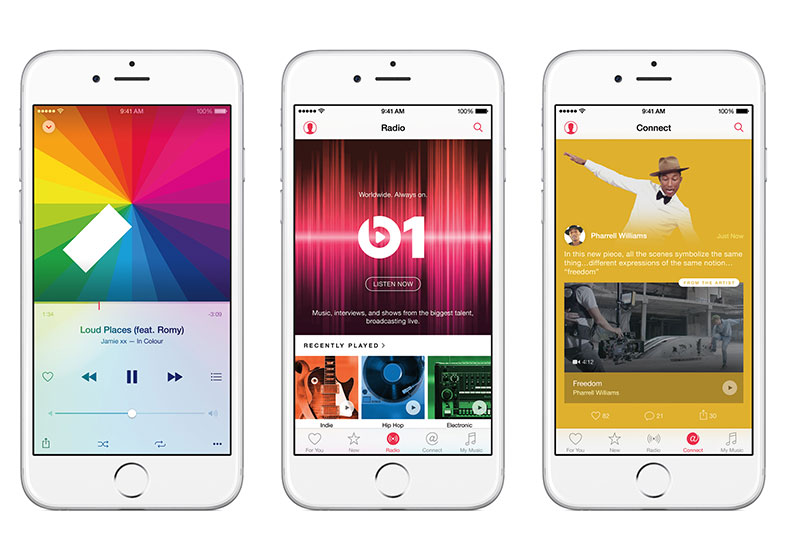
Both Spotify and Apple Music offer similarly clean, simple and intuitive layouts. That wasn’t always the case, though. When Apple Music first launched, we found its busy interface a bit clunky to use.
But with Apple's 2016 iOS 10 update, the Cupertino giant stripped it back, with cleaner typography and graphics. Features and options are hidden away behind icons and collapsible tabs, and the layout is easier to navigate.
The rule of thumb for using Apple Music is to click everything. Tapping the ellipsis that appears almost everywhere opens options such as: play next, add to library, add to a playlist, share (to any social media), lyrics and download.
Everything is neatly contained within five sections: Library, For You, Browse, Radio and Search/store. Sub-sections for New Music and Curated Playlists are clearly labelled within the Browse section.
The Library is where all your music lives. This includes files stored on your smartphone, CD-ripped WAVs, your own playlists and any music you’ve saved and downloaded while streaming or listening to radio in Apple Music.
Thanks to its compatibility with iCloud sharing, you’ll also be able to see all the music stored on your iTunes account.
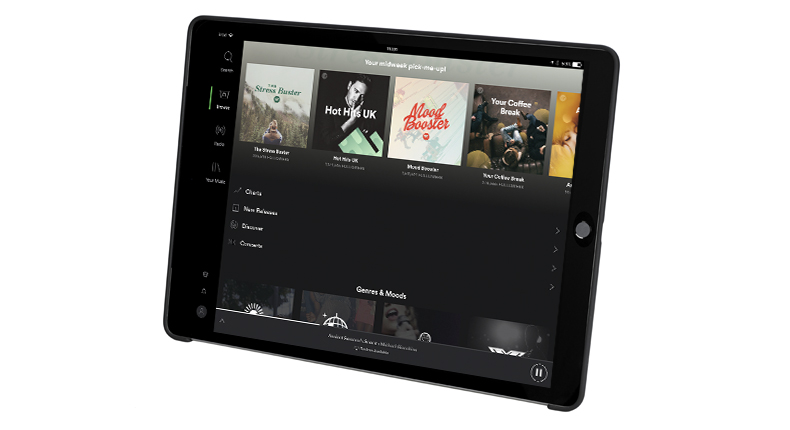
Spotify allows you to bring your local files into its interface too, but it’s not as well integrated. If you want all your music in one place, Apple Music does it better.
Spotify’s iconic green-tinted silver-on-grey interface has long been the ideal template with its logical and accessible sidebar menu layout, and its consistent focus on content over the years has made it all the more practical.
The Browse (or ‘home’) page throws up context-based playlists, constantly updated UK and global charts, and new releases for your attention, as well as content sorted by genre and based on tracks you’ve previously listened to.
A new ‘Concert’ tab that flags up gigs based on your music tastes and location, as well as ones that are ‘popular near you’, is a nice addition for music-lovers too.
**Winner** Draw
Discovery

For those who like to explore new bands, both Spotify and Apple Music encourage the pioneer in you.
When you register for Apple Music, tapping on floating red circles highlighting different genres of music and artists gives an indication of your initial preferences.
Hitting ‘Love’ or ‘Dislike’ on songs updates this and we are certainly impressed by Apple’s curation, and by how on-point the playlists are. On the iOS app, clicking on the 'For You' heart also brings up a list of regularly updated playlists such as Get Up!, Chill, New Music, and Favourites – new, zero-effort playlists specific to your listening.
By attributing a great deal of focus on music discovery through personalised algorithmic playlists, Spotify has managed to take this step too.
One of its most popular features is Discover Weekly, which uses Spotify’s ‘deep learning’ system to generate a playlist of 30 songs every Monday that are relevant to your listening habits.
There’s also more concentration on discovering new music. Complementing Discover Weekly is Release Radar, a two-hour playlist of brand-new music sent out every Friday, so that you never miss the latest tracks from your favourite artists.
It even includes new remixes of songs from artists you like or have recently listened to, and in case you need even more songs to soundtrack your weekend, there’s a New Music Friday UK playlist that ties in with the official UK chart. Rinsed them by Wednesday? That’s where the Daily Mix, which consists of five genre-specific playlists, comes in. The more you listen the more they evolve…
**Winner** Draw
Video and radio
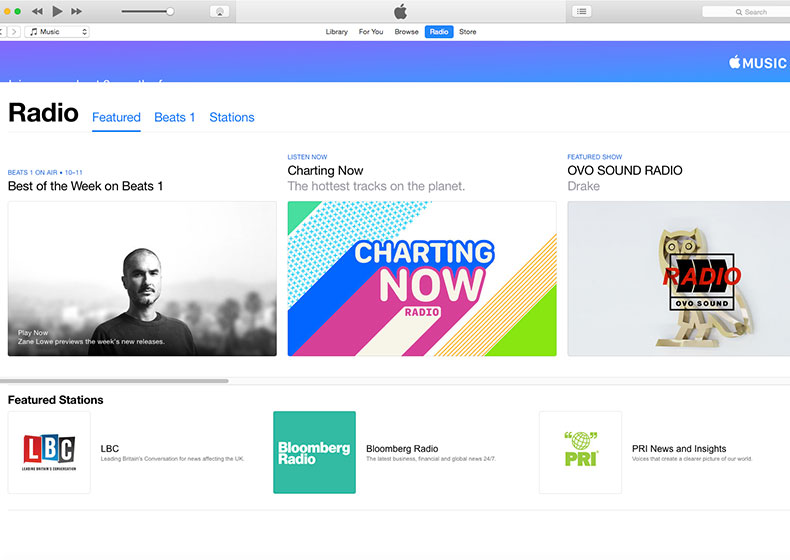
Content isn’t limited only to music. Both Spotify and Apple have branched out into video content.
They won’t be challenging YouTube just yet, but we’re keen to see how – and if –these develop. Apple Music still boasts a more attractive and comprehensive radio offering, however.
Unlike Spotify’s algorithmic radio, which curates songs around a particular artist, Apple Music can shout much louder about its live 24/7 global ‘youth-orientated’ station, Apple Music 1. Fronted by DJs such as Zane Lowe and featuring a host of celebrity guest slots (from the likes of Dr Dre, Pharrell Williams and Elton John), Apple Music 1 is something that no other streaming service has – and ultimately one Spotify has to take on the chin.
Two additional radio stations are set to launch in 2020: Apple Music Hits, celebrating pop songs from the 80s, 90s, and 2000s, and Apple Music Country, which will, unsurprisingly, play country music.
**Winner** Apple Music
Sound quality
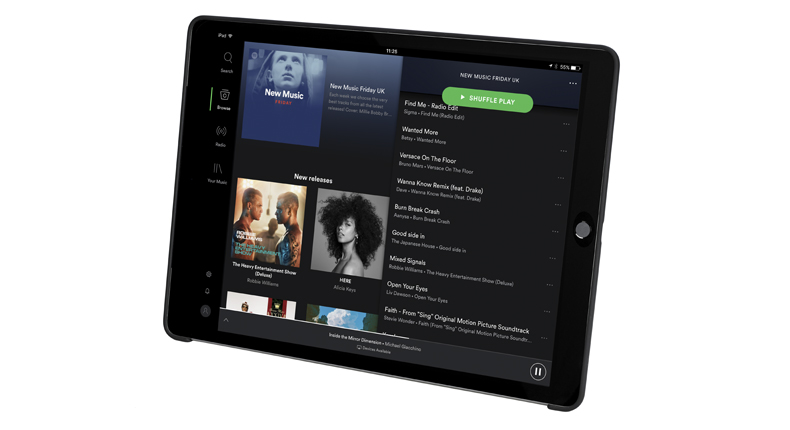
The 256kbps AAC files on Apple Music’s iCloud library sound more open and involving than Spotify’s 320kbps MP3 streams, and benefit from extra space, subtlety and punch too. It’s not a million miles ahead, though.
If you listen on Spotify's web player or via Chromecast, it streams in AAC at 128kbps for free users, or 256kbps for Premium. Apple Music streams 256kbps AAC files across the board. Spotify still offers decent detail levels and a tonally balanced presentation that’s refined and easy on the ears – it’s just not quite as engaging at 128kbps, of course.
Ultimately though, we’re still waiting for Spotify and Apple Music to adopt a lossless or hi-res audio sound quality option similar to Deezer, Tidal and Qobuz. For both services, this seems the next logical barrier to push.
**Winner** Apple Music
Verdict
Calls don’t get much closer than this. Apple Music sounds slightly better and is probably the pick for those who value Apple Music 1 radio, enjoy having all their music in one place, and can’t live without certain big-name artists and their latest releases.
But Spotify is undoubtedly the choice for those who value discovering and sharing music, and the clear winner for those wanting an affordable option.
So, while Apple Music is an undeniable threat with the definite potential to leapfrog Spotify in the future, the Swedish service remains the one to beat – for now at least.
**Overall winner** Spotify
MORE:
Spotify tips, tricks and features
Apple Music tips, tricks and features
AirPlay 2: everything you need to know
What Hi-Fi?, founded in 1976, is the world's leading independent guide to buying and owning hi-fi and home entertainment products. Our comprehensive tests help you buy the very best for your money, with our advice sections giving you step-by-step information on how to get even more from your music and movies. Everything is tested by our dedicated team of in-house reviewers in our custom-built test rooms in London, Reading and Bath. Our coveted five-star rating and Awards are recognised all over the world as the ultimate seal of approval, so you can buy with absolute confidence.
-
teschall I’m not sure how you picked Spotify as the winner. By my count of the “winner” in each category, its a draw.Reply
I do think there are a couple of other differentiators:
Spotify play everywhere feature is convenient.
Apple Music Lyrics Service (which is very nice on AppleTV devices)
Apple integration with the iphone and 3rd party plugins like MusicHarbor and MusicSmartIf you use Apple devices, I think Apple Music is the service I would use. -
Friesiansam I would rather pay another fiver each month and get CD quality from Tidal. At least I would if I was minded to bother with streaming...Reply -
hybridauth_Facebook_1379528431 If you ever wanted proof that WhatHiFi has no idea what they're talking about when it comes to audio and is generally either biased or very superficial and does NO tests - here's a concrete scientifical audio comparison:Reply
FURPQI3VW58View: https://youtu.be/FURPQI3VW58
As you can see, Spotify retains MUCH MUCH more sound from the original master vs Apple Music and clearly sounds better.
What's even more funny, is that WhatHiFi is telling us that Spotify uses 320kbps MP3, which is very false and proves they don't know what they talking about. It uses 320kbps OGG VORBIS, which is much superior to mp3. And this is EASILY ACCESSIBLE INFORMATION on Spotify.com. -
Friesiansam Reply
In this article; https://www.whathifi.com/us/advice/mp3-aac-wav-flac-all-the-audio-file-formats-explained WHF make it very clear that Spotify use OGG Vorbis for the 320kbps service.hybridauth_Facebook_1379528431 said:If you ever wanted proof that WhatHiFi has no idea what they're talking about when it comes to audio and is generally either biased or very superficial and does NO tests - here's a concrete scientifical audio comparison:
FURPQI3VW58View: https://youtu.be/FURPQI3VW58
As you can see, Spotify retains MUCH MUCH more sound from the original master vs Apple Music and clearly sounds better.
What's even more funny, is that WhatHiFi is telling us that Spotify uses 320kbps MP3, which is very false and proves they don't know what they talking about. It uses 320kbps OGG VORBIS, which is much superior to mp3. And this is EASILY ACCESSIBLE INFORMATION on Spotify.com. -
djh1697 No Roon integration, no Roon plugin, not for me then. Roon does some wonderful things ;) DSD conversation makes a CD rip sound wonderful. I now have two sources, a Roon server connected to a MARCH USB DSD256 DAC and a Pink Triangle #Cymbiosis serviced Pink Triangle turntable.Reply
Naim 202/200/Stageline/NACA5
TeddyPardo Teddycap plus
Kudos x3
Pink Triangle PT1/J7 RB300/Rega Elys cartridge
Next upgrade Kudos speaker cable

